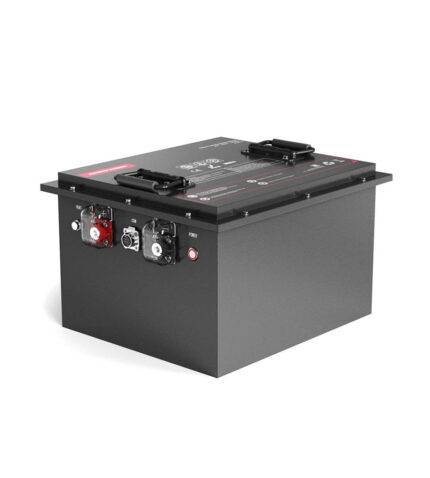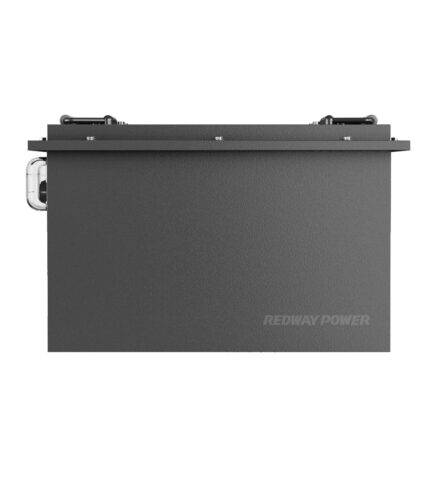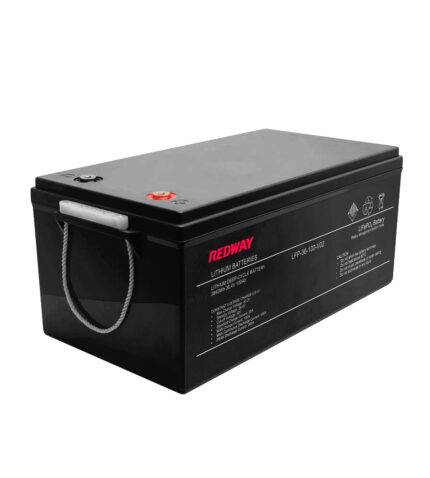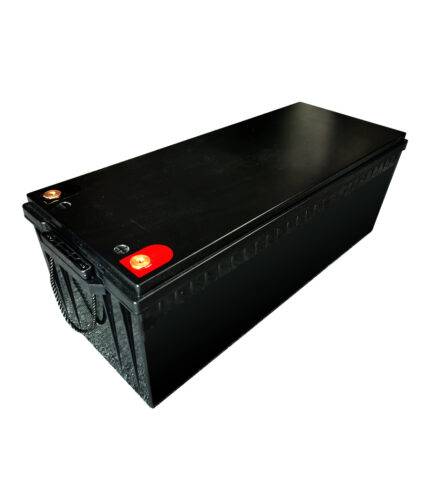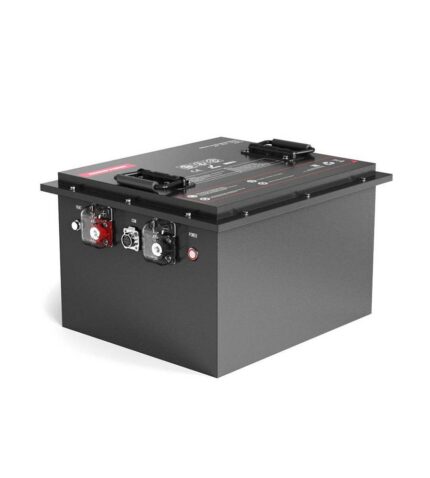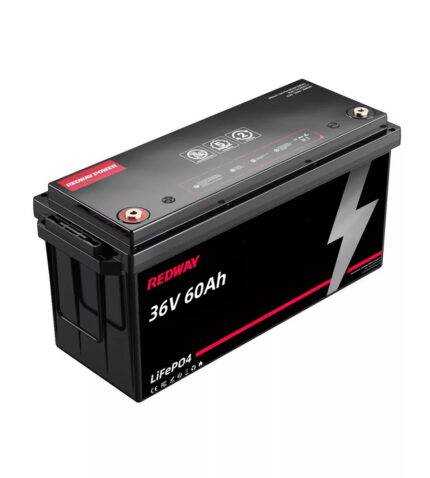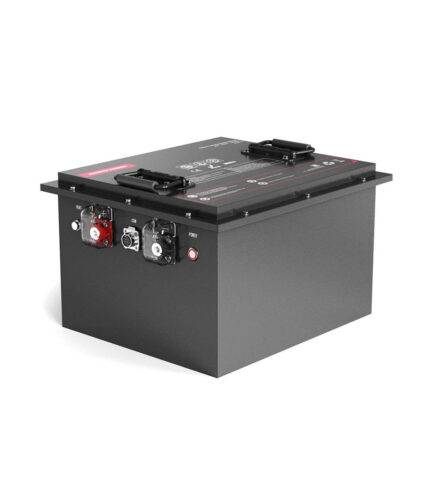- Forklift Lithium Battery
-
48V
- 48V 210Ah
- 48V 300Ah
- 48V 420Ah (949 x 349 x 569 mm)
- 48V 420Ah (950 x 421 x 450 mm)
- 48V 456Ah
- 48V 460Ah (830 x 630 x 590 mm)
- 48V 460Ah (950 x 421 x 450 mm)
- 48V 460Ah (800 x 630 x 600 mm)
- 48V 460Ah (820 x 660 x 470 mm)
- 48V 500Ah
- 48V 560Ah (810 x 630 x 600 mm)
- 48V 560Ah (950 x 592 x 450 mm)
- 48V 600Ah
- 48V 630Ah
-
48V
- Lithium Golf Cart Battery
- 12V Lithium Battery
12V 150Ah Lithium RV Battery
Bluetooth App | BCI Group 31
LiFePO4 Lithium
Discharge Temperature -20°C ~ 65°C
Fast Charger 14.6V 50A
Solar MPPT Charging - 24V Lithium Battery
- 36V Lithium Battery
- 48V Lithium Battery
-
48V LiFePO4 Battery
- 48V 50Ah
- 48V 50Ah (for Golf Carts)
- 48V 60Ah (8D)
- 48V 100Ah (8D)
- 48V 100Ah
- 48V 100Ah (Discharge 100A for Golf Carts)
- 48V 100Ah (Discharge 150A for Golf Carts)
- 48V 100Ah (Discharge 200A for Golf Carts)
- 48V 150Ah (for Golf Carts)
- 48V 160Ah (Discharge 100A for Golf Carts)
- 48V 160Ah (Discharge 160A for Golf Carts)
-
48V LiFePO4 Battery
- 60V Lithium Battery
-
60V LiFePO4 Battery
- 60V 20Ah
- 60V 30Ah
- 60V 50Ah
- 60V 50Ah (Small Size / Side Terminal)
- 60V 100Ah (for Electric Motocycle, Electric Scooter, LSV, AGV)
- 60V 100Ah (for Forklift, AGV, Electric Scooter, Sweeper)
- 60V 150Ah (E-Motocycle / E-Scooter / E-Tricycle / Tour LSV)
- 60V 200Ah (for Forklift, AGV, Electric Scooter, Sweeper)
-
60V LiFePO4 Battery
- 72V~96V Lithium Battery
- Rack-mounted Lithium Battery
- E-Bike Battery
- All-in-One Home-ESS
- Wall-mount Battery ESS
-
Home-ESS Lithium Battery PowerWall
- 24V 100Ah 2.4kWh PW24100-S PowerWall
- 48V 50Ah 2.4kWh PW4850-S PowerWall
- 48V 50Ah 2.56kWh PW5150-S PowerWall
- 48V 100Ah 5.12kWh PW51100-F PowerWall (IP65)
- 48V 100Ah 5.12kWh PW51100-S PowerWall
- 48V 100Ah 5.12kWh PW51100-H PowerWall
- 48V 200Ah 10kWh PW51200-H PowerWall
- 48V 300Ah 15kWh PW51300-H PowerWall
PowerWall 51.2V 100Ah LiFePO4 Lithium Battery
Highly popular in Asia and Eastern Europe.
CE Certification | Home-ESS -
Home-ESS Lithium Battery PowerWall
- Portable Power Stations
- Forklift Lithium Battery
- Lithium Golf Cart Battery
- Rack-mounted Lithium Battery
- 12V Lithium Battery
- 24V Lithium Battery
- 36V Lithium Battery
- 48V Lithium Battery
- 60V Lithium Battery
- 72V Lithium Battery
- 96V Lithium Battery
- 21700
- C&I ESS
- eBike Lithium Battery
- All-in-One Home ESS
- PowerWall HESS
- Car Starter Lithium Battery
- Portable Power Station
- Other
- Best Seller 2024
Redway Power, a trusted manufacturer wholesaler, specializes in crafting custom 36V LiFePO4 lithium batteries (for Golf Carts, Electric Scooter, Robot AGV, AMR, Floor Cleaner Machine, Floor Scrubber, Solar ESS, etc). With a commitment to quality and innovation, Redway Power leads the market in providing bespoke power storage solutions. Their expertise ensures reliable performance and tailored designs, making them the preferred choice for wholesale battery needs.
Showing all 7 results
36V Lithium Battery FAQs▾
How long can a 36V lithium battery last?
The lifespan of a 36V lithium battery can vary depending on usage and maintenance. On average, a well-maintained 36V lithium battery can last anywhere from 2 to 5 years or more. Factors such as usage patterns, charging habits, temperature conditions, and maintenance practices can influence the lifespan. By following proper care and maintenance, including regular charging, avoiding deep discharges, and storing the battery correctly, you can maximize the lifespan of your 36V lithium battery.
Can a 36V LiFePO4 battery last for 20 years?
LiFePO4 (lithium iron phosphate) batteries have garnered attention for their exceptional durability and long cycle life. In this comprehensive guide, we delve into the question of whether LiFePO4 batteries can last 20 years, examining the factors that influence their longevity and providing insights into their potential for extended service life. The theoretical cycle life of LiFePO4 batteries is a maximum of 3,000 charge and discharge cycles. While LiFePO4 batteries can still be used after 20 years of normal use, the capacity of the battery will be severely attenuated by then.
How long does it take to charge a 36V lithium battery?
The charging time of a 36V lithium battery can vary depending on its capacity, the charger's output power, temperature conditions, and the initial charge level. Generally, charging times can range from a few hours to overnight. It is crucial to use a charger specifically designed for 36V lithium batteries and follow recommended charging practices to ensure safe and efficient charging. Factors such as battery capacity, charger output, temperature conditions, and the state of charge all play a role in determining the charging time.
How do you charge a 36V lithium battery?
Charging a 36V lithium battery is a straightforward process. Start by locating the charging port on the battery pack. Connect the compatible 36V lithium battery charger securely to the charging port. Plug the charger into a power outlet and turn it on. Allow the battery to charge uninterrupted until it reaches full capacity. Follow the manufacturer's guidelines for charging times and avoid overcharging. By following these steps, you can effectively charge your 36V lithium battery for optimal performance.
What size solar panel do you need to charge a 36V LiFePO4 battery?
The size of the solar panel needed to charge a 36V LiFePO4 battery depends on the battery's capacity and the desired charging time. For example, if you have a 100Ah LiFePO4 battery and want to charge it in 5 hours of peak sunlight, you would need a solar panel with a minimum output of 240W (100Ah / 5h = 20A, 20A x 12V = 240W).
It is important to consider factors such as shading, panel orientation, and charge controller efficiency, as they can affect the actual charging time and the size of the solar panel required. Using a higher wattage solar panel or adding a buffer to the required wattage can ensure more efficient and reliable charging.
What can make 36V lithium batteries not last as long?
Several factors can impact the lifespan of 36V lithium batteries. The type of battery, such as lithium iron phosphate (LiFePO4) or lithium polymer (LiPo), plays a role in durability. The battery's capacity affects how long it can last on a single charge. Proper usage, including avoiding over-discharging and charging promptly, contributes to longevity. Regular maintenance, such as cleaning and avoiding overcharging, is crucial. Using the correct charger and maintaining the battery within the recommended temperature range are also essential. By considering these factors and following proper care practices, you can maximize the lifespan of your 36V lithium battery.
Top 5 chargers for 36V LiFePO4 lithium batteries
Choose a high-quality charger that is specifically designed for these batteries. Look for features like an intelligent charging algorithm, temperature compensation, and overcharge protection to ensure efficient and safe charging. Consider factors like charging current, compatibility, and user-friendly design when selecting a charger. With the right charger, you can ensure optimal performance and longevity for your 36V LiFePO4 lithium batteries.
Can you put lithium batteries in a 36 volt golf cart?
Yes, you can install lithium batteries in a 36 volt golf cart. Lithium batteries provide numerous benefits, such as longer lifespan, lighter weight, faster charging, and higher energy density compared to traditional lead-acid batteries. Ensure compatibility with your golf cart's electrical system and follow the manufacturer's guidelines for installation and usage. Upgrade to lithium batteries for improved performance and a more efficient power source for your golf cart.
Are lithium batteries worth the extra cost in a golf cart?
Yes, lithium batteries are worth the extra cost in a golf cart. Despite the higher upfront investment, the benefits they offer make them a valuable choice. Lithium batteries are lighter, have a longer lifespan, charge faster, require less maintenance, and provide consistent power output. They also have a lower carbon footprint and are environmentally friendly. With their superior performance and durability, lithium batteries enhance the overall golfing experience and provide long-term cost savings.
What are the disadvantages of lithium golf cart batteries?
Lithium golf cart batteries offer numerous advantages, but it's important to consider the potential disadvantages. These include a higher initial cost compared to traditional lead-acid batteries, the need for specific charging infrastructure, sensitivity to temperature extremes, voltage drop-off characteristics, and safety concerns. Despite these drawbacks, the benefits of longer lifespan, reduced maintenance, improved performance, and environmental friendliness make lithium batteries a compelling choice for golf cart owners seeking enhanced performance and long-term cost savings.
Can you charge a 36V lithium battery with a 12V charger?
No, it is not recommended to charge a 36V lithium battery with a 12V charger. Doing so can lead to undercharging or overcharging, which can limit the battery's capacity, cause damage, and pose safety risks. It is crucial to use chargers specifically designed for the voltage and charging requirements of lithium batteries. Using the correct charger ensures optimal performance, extends the battery's lifespan, and prevents potential hazards.
How to charge a 36V lithium battery without a charger?
Charging a 36V lithium battery without a charger is possible using alternative methods. One option is to use a power supply that can deliver the required voltage and current. Connect the positive and negative terminals of the power supply to the battery and adjust the voltage and current limits. Another option is to use a variable power source or a power bank with the appropriate voltage and current output. Additionally, you can charge the battery using a DC power source with step-up converters. It's important to follow safety precautions and ensure compatibility with the battery's requirements.
Can I charge a lithium battery with a normal 12v charger?
No, it is not recommended to charge a lithium battery with a normal 12V charger. Lithium batteries have specific charging requirements, and using a regular 12V charger may not provide the correct voltage and current needed for safe and efficient charging. It is essential to use a charger specifically designed for lithium batteries to ensure optimal performance, prevent potential damage to the battery, and ensure safety during the charging process.
How many amps should a 36 volt charger put out?
A medium amp output 36 volt charger typically puts out between 10 and 15 amps. This range is sufficient for most applications that use around 100 amp hours of battery power or have a constant amp load, such as in a power supply application. However, it's important to consider the specific requirements of your battery and application to determine the appropriate amperage for optimal charging.
What is the voltage of a 36V lithium-ion battery when fully charged?
When a 36V lithium-ion battery is fully charged, the voltage of each cell should read around 4.2 volts. Since a 36V battery is made up of multiple cells wired together in series, the total voltage of the fully charged battery is approximately 36 volts. It's crucial to ensure that the battery reaches this voltage during the charging process to maximize its performance and capacity. However, it's always advisable to refer to the manufacturer's specifications for the specific voltage range of your lithium-ion battery.
Why is my 36V lithium battery not charging?
Troubleshooting tips for lithium battery charging issues. If your 36V lithium battery is not charging, it could be due to damaged batteries, loose connections, inappropriate chargers, or the battery being in low voltage disconnect mode. Try checking and tightening connections, using a clamp-on ammeter and volt meter to test electricity flow, resetting the battery, ensuring an appropriate charger, and seeking professional help if needed. Follow these troubleshooting tips to get your lithium battery charging again
Know more:
General Benefits and Applications
What are the advantages of using a 36 volt lithium battery in electric vehicles?
Using a 36 volt lithium battery in electric vehicles provides benefits such as lightweight design for improved handling, high energy density for longer ranges, and faster charging times compared to lead-acid batteries. Additionally, lithium batteries have a longer lifespan, allowing for more cycles and reduced replacement costs over time.
What are the common applications for a 36v battery?
Common applications for a 36v battery include electric bicycles and scooters, power tools, marine equipment, solar energy storage systems, and electric golf carts. Its versatility and efficient power output make it suitable for various devices requiring reliable energy sources.
Choosing the Right Battery
How do I choose the right 36v lithium battery pack for my application?
To choose the right 36v lithium battery pack, consider factors like your vehicle's power requirements, desired range, and compatibility with existing components. Evaluate the battery's capacity (Ah rating), cycle life, discharge rate, and charging time to ensure it meets your specific performance needs.
What features should I look for in a 36v lithium ion marine battery?
When selecting a 36v lithium ion marine battery, look for features such as high energy density for compact storage, waterproof or corrosion-resistant construction, built-in Battery Management Systems (BMS) for safety, and long cycle life. Fast charging capabilities and lightweight design are also important for marine applications.
Comparison with Other Battery Types
How does a 36 volt lithium ion battery compare to other battery types?
A 36 volt lithium ion battery offers advantages over other types like lead-acid batteries due to its higher energy density, lighter weight, longer lifespan (up to 5,000 cycles), and faster charging times. While lead-acid batteries may be cheaper upfront, lithium batteries provide better performance and lower long-term costs.
What are the benefits of using a 36v lifepo4 battery over traditional lead-acid batteries?
A 36v LiFePO4 battery offers several benefits over traditional lead-acid batteries, including longer lifespan (up to 5 times longer), higher efficiency with faster charging times, lower weight for better portability, and enhanced safety features. These advantages make it a cost-effective choice in the long run.
Performance Expectations
What performance can I expect from a 36v 100ah lithium battery?
A 36v 100ah lithium battery typically provides substantial power for applications such as electric vehicles or solar storage systems. You can expect a range of approximately 30-60 miles on a single charge in electric bikes or scooters, depending on usage conditions and terrain.
How does a 36v lithium golf cart battery enhance the performance of electric golf carts?
A 36v lithium golf cart battery enhances performance by providing higher energy density for longer runtimes and improved acceleration. Its lightweight design reduces overall cart weight, making it easier to maneuver while offering faster charging times compared to traditional lead-acid batteries.
Products and Innovations
What products does Redway Battery offer for high-capacity energy storage?
Redway Battery offers various high-capacity energy storage solutions including lithium-ion batteries designed for applications like solar energy systems, electric vehicles, and backup power supplies. Their products focus on efficiency, longevity, and safety to meet diverse energy needs across multiple sectors.
How does Redway Power contribute to advancements in battery technology?
Redway Power contributes to advancements in battery technology by focusing on research and development of high-performance lithium-ion batteries. They emphasize innovation in energy density, safety features, and environmental sustainability while providing customized solutions that meet evolving market demands.
Key Characteristics
What are the key characteristics of a lithium battery 36v used in various applications?
Key characteristics of a 36v lithium battery include high energy density for compact design, lightweight construction for portability, long cycle life (typically over 2,000 cycles), fast charging capabilities to reduce downtime, and low self-discharge rates ensuring reliability during storage.
How does a 36v lithium ion battery perform in terms of efficiency and lifespan?
A 36v lithium ion battery performs efficiently with an average round-trip efficiency of around 95%, providing reliable power delivery. Its lifespan can exceed 2,000 charge cycles under proper usage conditions, significantly outlasting traditional lead-acid batteries and resulting in lower overall maintenance costs.














